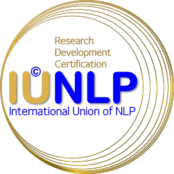Learning Anxiety
Learning anxiety is a type of anxiety that is characterized by feelings of fear, worry, and nervousness related to academic or learning situations. This type of anxiety can manifest in various ways, including test anxiety, math anxiety, and writing anxiety, and can have a significant impact on an individual’s academic performance and overall well-being.
There are several factors that can contribute to learning anxiety, including a lack of self-confidence, perfectionism, and negative past experiences in academic or learning situations. Additionally, individuals who have a history of anxiety or other mental health conditions may be more susceptible to experiencing learning anxiety.
Symptoms of learning anxiety can include physical symptoms such as sweating, rapid heartbeat, and stomachaches, as well as emotional symptoms such as feelings of dread, hopelessness, and helplessness. Individuals with learning anxiety may also experience cognitive symptoms such as difficulty concentrating, negative self-talk, and the belief that they are not capable of succeeding academically.
There are several strategies that can be used to manage and reduce learning anxiety. One effective strategy is cognitive-behavioral therapy (CBT), which is a type of therapy that focuses on identifying and changing negative thought patterns and behaviors. Through CBT, individuals with learning anxiety can learn to challenge and replace negative thoughts with more positive and realistic ones, and develop coping strategies to manage anxiety symptoms.
Another effective strategy is mindfulness-based interventions. Mindfulness is a practice that involves paying attention to the present moment with an open and non-judgmental attitude. Mindfulness-based interventions can help individuals with learning anxiety to become more aware of their thoughts and emotions, and reduce the intensity of their anxiety symptoms.
Other strategies that can be helpful include, relaxation techniques such as deep breathing, progressive muscle relaxation, and visualization. Additionally, getting enough sleep, engaging in regular physical exercise, and eating a healthy diet can also help to reduce symptoms of anxiety.
In conclusion, learning anxiety is a type of anxiety that affects individuals in academic or learning situations. It is characterized by physical, emotional, and cognitive symptoms that can have a significant impact on an individual’s academic performance and overall well-being. However, there are several effective strategies that can be used to manage and reduce learning anxiety, including cognitive-behavioral therapy, mindfulness-based interventions, relaxation techniques, and self-care practices. It’s important to seek professional help if learning anxiety persists, as a therapist can help tailor strategies that work best for the individual.
How Neuro Linguistic Programming can resolve Learning Anxiety?
Neuro-linguistic programming (NLP) is a therapeutic approach that aims to change the way individuals think and behave by altering their language patterns and communication style. It can be an effective tool for resolving learning anxiety, a type of anxiety characterized by feelings of fear, worry, and nervousness related to academic or learning situations.
One of the key principles of NLP is that our thoughts, emotions, and behaviors are interconnected. Therefore, by changing the way we think and talk to ourselves, we can change how we feel and behave. NLP techniques can be used to help individuals with learning anxiety to identify and change negative thought patterns and beliefs that contribute to their anxiety.
One NLP technique that can be used to resolve learning anxiety is reframing. This technique involves changing the way we think about a situation or experience by looking at it from a different perspective. For example, an individual with learning anxiety may view a test as a life or death situation, and see failure as a personal weakness. Through reframing, this individual can learn to see the test as an opportunity to learn and grow, and view failure as a natural part of the learning process.
Another NLP technique that can be used to resolve learning anxiety is the use of anchors. An anchor is a specific word, phrase, or action that can be used to trigger a specific emotional response. By creating anchors that are associated with feelings of calm, confidence, and motivation, individuals with learning anxiety can learn to access these emotions in situations where they would typically experience anxiety.
A third NLP technique that can be used to resolve learning anxiety is rapport building. This technique involves creating a sense of connection and understanding with others by mirroring their language patterns and behaviors. For individuals with learning anxiety, building rapport with others can help them feel more comfortable and secure in academic or learning situations, and reduce their anxiety symptoms.
In conclusion, NLP is a therapeutic approach that can be used to resolve learning anxiety by altering an individual’s language patterns and communication style. Through techniques such as reframing, the use of anchors, and rapport building, individuals can learn to think and behave differently and reduce their anxiety symptoms. It’s important to note that NLP can be used in conjunction with other therapeutic approaches.
By Jihad Abou Zeid
The developer of The New Generation of NLP
